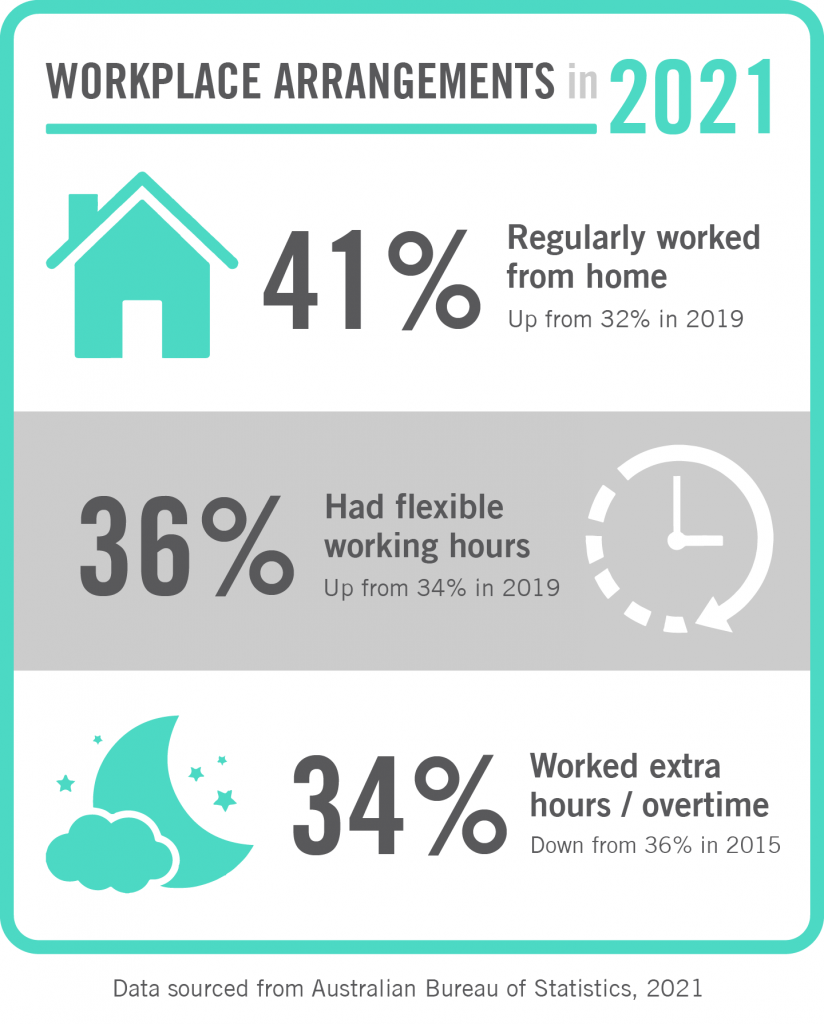The post-Covid tech sector looks strong as migration helps close the IT skills gap.

Covid-19 changed how—and where—the world worked
The Covid-19 pandemic changed the way most people worked in Australia and around the world.
The percentage of employees working from home on a regular basis had been steadily increasing before the pandemic, the Australian Bureau of Statistics reported in December 2021. Bjorn Jarvis, Head of Labour Statistics at the ABS, said that the increase was “by around a percentage point every two years.”
The rate of increase during the pandemic was closely linked to patterns in virus transmission. Particular periods, like the extensive lockdowns associated with the spread of the Delta variant, saw the greatest rate increase. Jarvis noted that August 2021 data “showed an 8.4 percentage point jump to 40.6 per cent.” That percentage was higher for managers and professionals—close to two-thirds (64 per cent).

IT support made it possible, but that support came at a cost
In many cases, this change in work arrangements led to an increased reliance on new and existing digital technologies. Telecommuting placed greater emphasis on technological solutions for interactions within and between businesses. A shortage of IT workers to provide technical support for these interactions soon led to a skills gap.
The National Skills Commission’s annual update of the skills priority list, released in October 2022, showed a dramatic increase in the number of occupations with national shortages (286 occupations, compared with 153 in 2021). According to data on job vacancies, software and applications programmers were among the five most in-demand workers.
Skilled information and communications technology (ICT) workers have been in high demand during the pandemic. The particular ICT roles in demand did change from project managers in 2021 to analysts, administrators and other roles in 2022.
Short-term solutions to fill the skills gap ran their course
In the short term, companies filled this gap by offering increased salaries and other benefits such as improved working conditions including flexibility of work location.
Almost half of all Australian businesses reported addressing workforce shortages by increasing wages, salaries or bonuses for existing staff. According to SEEK salary data, average salaries for several ICT roles have grown by 20% or more, compared to pre-pandemic times.
The closure of international borders limited the migration of skilled IT workers who would have otherwise been available to help fill the skills gap.
Migration offers a solution now and for the future
The National Skills Commission’s skills priority list is used to help guide Government policy on training and migration. While training takes time, migration offers a more immediate solution. And that solution can be long-term.
Increasing numbers of visa applications are being granted. The talent pool is beginning to fill and the skills gap is starting to close.
Skilled tech professionals may be eligible for a temporary or permanent visa under one of three visa programs:
- Employer sponsored program – subclass 494, 482 and 186 visas
- General Skilled Migration program – subclass 491, 189 and 190 visas
- Global Talent visa program – subclass 858 visa
These programs aim to support the growth and development of the Australian economy by attracting and retaining the best tech talent.
Redundancies overseas means opportunities in Australia
The tech sector in Australia had already experienced significant growth in the years before the pandemic. A 2020 McKinsey global survey of executives suggested that the pandemic had actually sped up the adoption of digital technologies by several years, and that these changes would likely be here for the long haul.
Redundancies in the tech sector across the globe present opportunities for the Australian tech sector. Migration Affairs reported that by February 2023, over 58,000 tech professionals in the US had been made redundant.
As those skilled workers consider their options, new opportunities such as temporary or permanent migration form part of the equation.
Limelight People can help you close your skills gap
Limelight People has a database of over 60,000 potential candidates capable of filling gaps across all sectors. Our tech sector network is strong, which means we’re well placed to help you fill a skills gap if you’re recruiting. Or, if you’re looking to be recruited, find a gap your skills can fill, get in touch with us.







